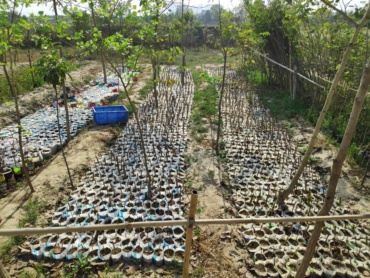Both stem cuttings and seeds can be used to propagate the plant. Both the methods will eventually lead to the new plant but the process of development for both methods will be different.
Propagation by stem cuttings
Propagation by stem cutting is a method of asexual reproduction that means the plant is cloned without any genetic variation. One thing that we should keep in mind is not all plants can be propagated by the stem cutting method. Many plants such as Hibiscus, wild Roses, Bougainvillea, Peepal and many climbers and creepers can be grown through stem cuttings. When you prune a plant at that time do not waste the twigs and branches which are cut. Make compost from the leaf matter, small twigs and delicate branches. And cut the thick branches in a slanting manner so that they can be used for propagation purposes.
Propagation by seeds
This is the most common method to create new plants. Seeds can be collected from the ripened fruits or are available in the market. The plants produced by the seeds have a better chance of surviving in the environment because they are the product of sexual reproduction.
If anyone is creating a nursery, they must try to create 90% of the plants by seeds. When we germinate a plant by stem cutting then it is not as strong as it should be. It requires more energy for its maintenance, and the growth is also not that fast. The growth rate of plants created by stem cutting is 60-70% of the plants which have been planted by the seeds.
Try to create maximum plants in your nursery with seeds. You can have 10-20% of plants by stem cutting but maximum germination should be by seeds.
